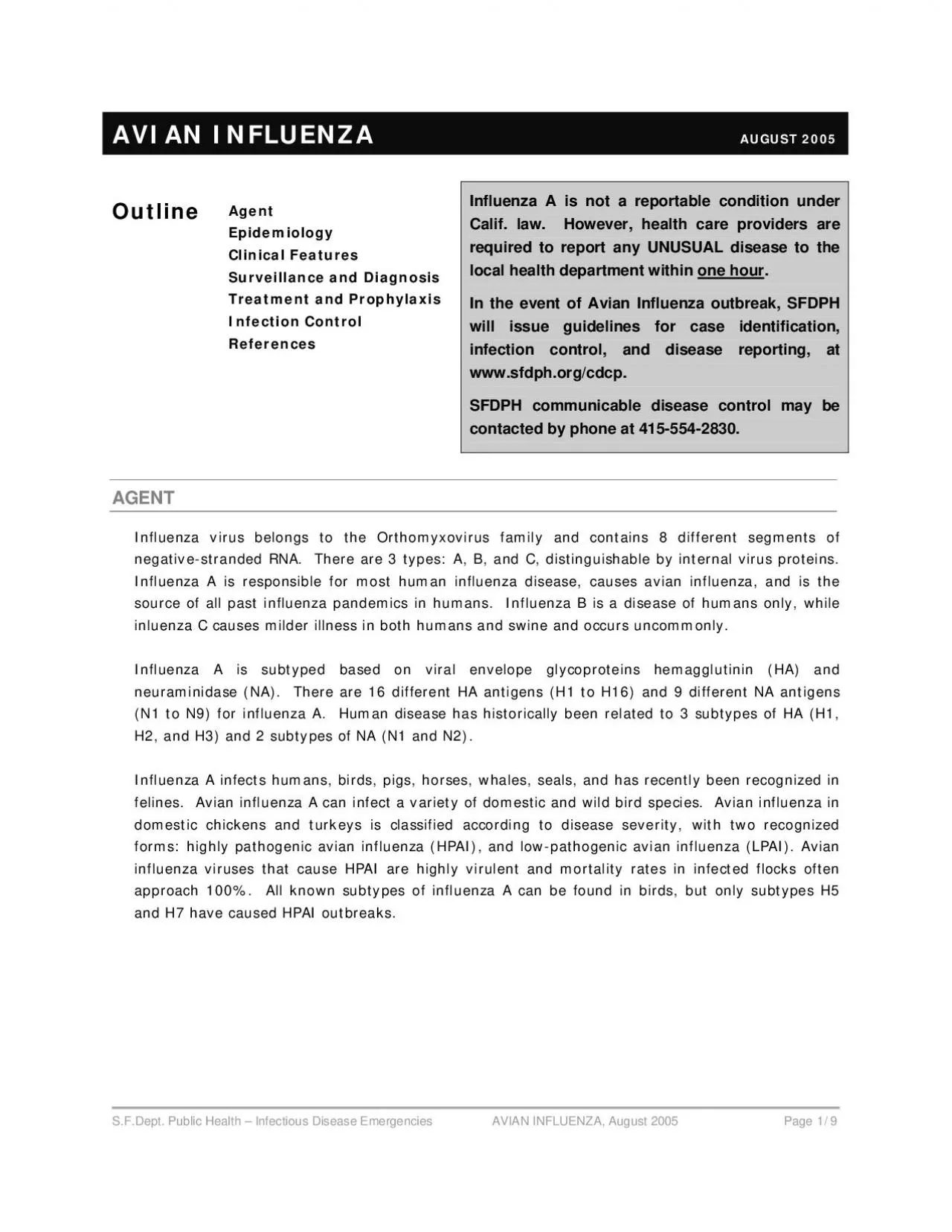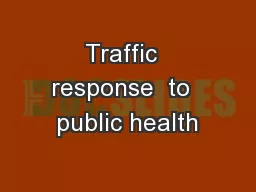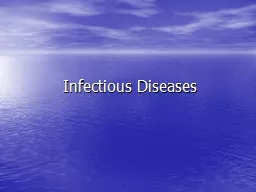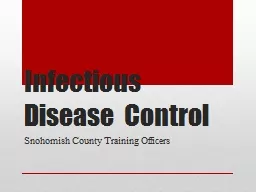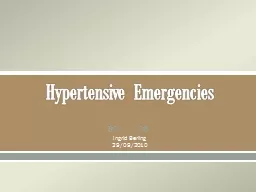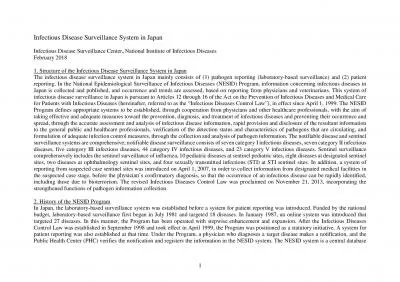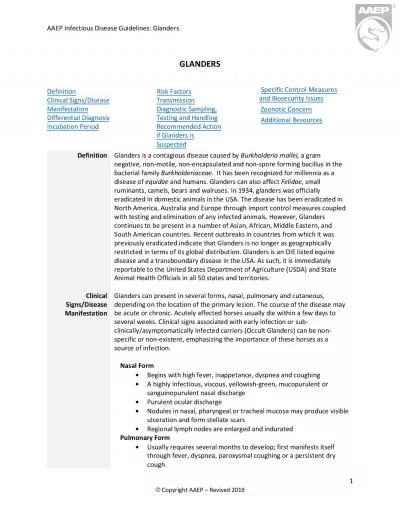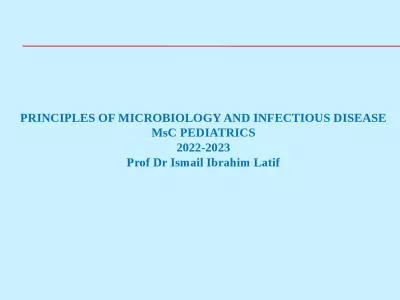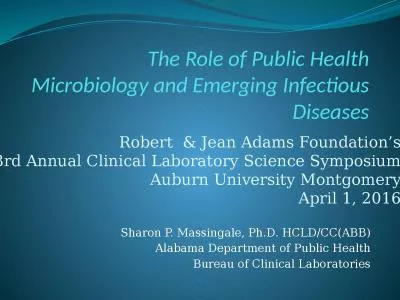PDF-SFDept Public Health Infectious Disease Emergencies
Author : murphy | Published Date : 2022-08-16
required to report any UNUSUAL disease to the local health department within one hour In the event of Avian Influenza outbreak SFDPH will issue guidelines for case
Presentation Embed Code
Download Presentation
Download Presentation The PPT/PDF document "SFDept Public Health Infectious Disease..." is the property of its rightful owner. Permission is granted to download and print the materials on this website for personal, non-commercial use only, and to display it on your personal computer provided you do not modify the materials and that you retain all copyright notices contained in the materials. By downloading content from our website, you accept the terms of this agreement.
SFDept Public Health Infectious Disease Emergencies: Transcript
Download Rules Of Document
"SFDept Public Health Infectious Disease Emergencies"The content belongs to its owner. You may download and print it for personal use, without modification, and keep all copyright notices. By downloading, you agree to these terms.
Related Documents

